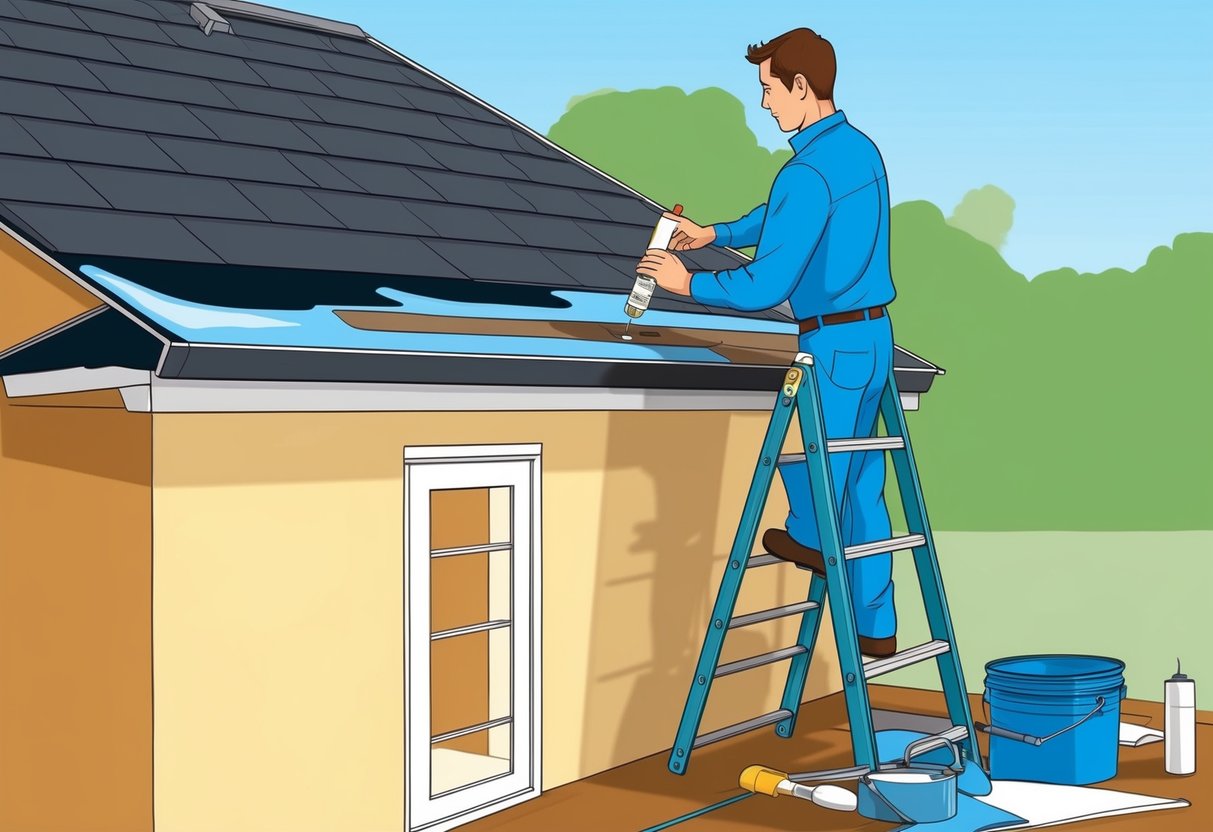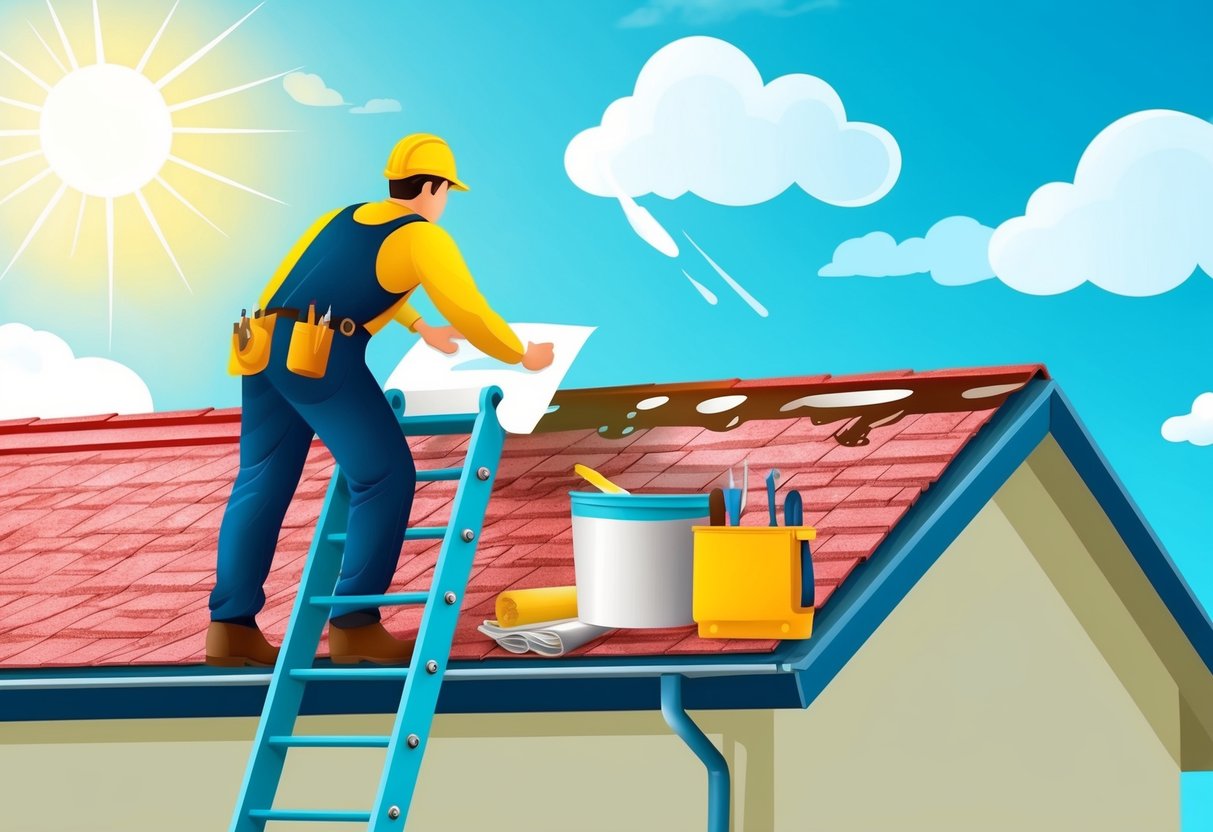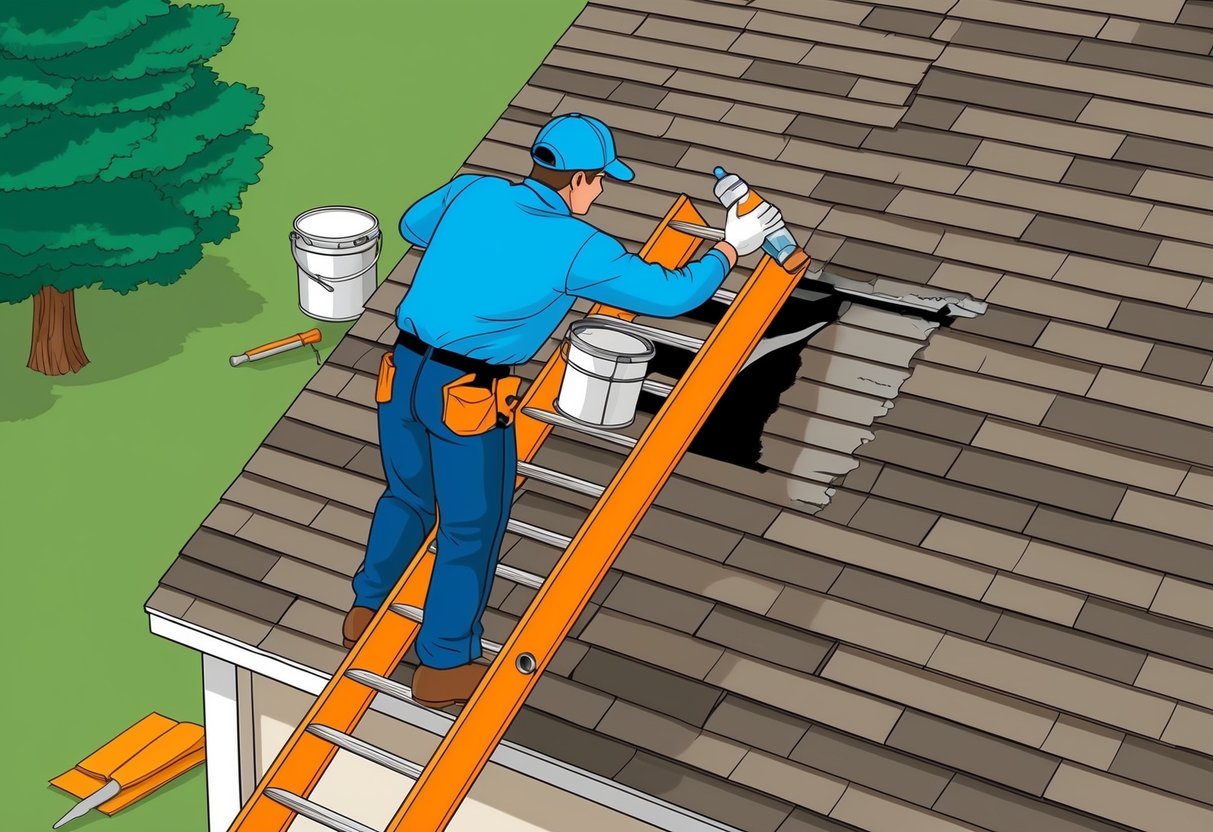
Estimating the Cost of Professional Roof Repairs
Professional roof repair costs can vary widely depending on the scale and complexity of the issue. Key factors include the extent of water damage, type of roofing materials, roof pitch, and ease of access.
Small repairs such as replacing a few shingles or minor flashing usually cost less. Major work such as structural repair, full flashing replacement, or correcting long-term leaks may be significantly more expensive.
Emergency services, steep roofs, and specialty materials (like slate or metal) can drive costs higher. Homeowners should request multiple quotes from licensed roofers for comparison.
Detailed estimates typically include labor, material costs, disposal fees, and any necessary permits. Insurance may cover some repair costs if the damage resulted from a covered peril such as hail or strong winds.
For an in-depth look at repair pricing, typical causes, and what to expect, review this complete roof leak repair cost guide.
Common Misconceptions About DIY Roof Repair

DIY roof repair often attracts homeowners looking to save money. Some common myths can lead to costly mistakes.
Understanding the true risks and avoiding beginner errors is crucial for anyone addressing a leaking roof or dealing with general roof damage.
Risks of Delaying Roof Repairs
Many believe that a small leak isn’t urgent or can be put off for months. In reality, even minor roof leaks can quickly escalate, causing hidden water damage to attic insulation, ceiling materials, and structural supports.
Water intrusion often leads to mold growth or wood rot, which are expensive to repair and hazardous to health. Delaying action can also void manufacturer warranties or homeowners’ insurance if the problem worsens due to neglect.
Regular inspections, especially after heavy rain or wind, help spot small issues before they grow.
Mistakes to Avoid for Beginners
Beginners frequently underestimate the scope of repairs or use the wrong materials for their specific roofing system. Simply replacing cracked shingles without checking for underlying water damage is a mistake.
Roofing repairs often require specific sealants, nails, or flashing, not just generic hardware store alternatives. Using improper products can make leaks worse or void warranties.
Another common pitfall is neglecting safety precautions. Always use the proper ladder, wear non-slip shoes, and avoid working alone.
Lack of experience can also result in missing the true source of a leak, as water often travels away from the entry point. For detailed guidance and beginner tips, see this DIY roof repair guide for beginners and avoid unnecessary risks.
Frequently Asked Questions

Many homeowners want to understand the specific tools, techniques, and safety concerns involved in roof leak repairs. Common DIY questions involve both temporary and permanent fixes and address different weather scenarios and product options.
What materials are needed for DIY roof leak repair?
Essential materials for DIY roof leak repair typically include roofing cement, caulking gun, roofing nails, waterproof sealant, roofing felt, and replacement shingles. A pry bar, putty knife, utility knife, and a ladder are also helpful for safe and effective repairs.
For larger problems, flashing and roof patch kits may be necessary.
What are the steps to fix a leaking roof from the inside?
To repair a leaking roof from the inside, locate the wet area and mark it. Dry the space completely if possible.
Use a putty knife to apply roofing tar directly to the leak or damaged section. Press a piece of plywood or shingle over the tar for extra support, then spread additional tar around the edges to seal it.
Is it possible to seal a roof leak in heavy rain, and if so, how?
It is possible to apply a temporary seal to a leaking roof in heavy rain, though it is not ideal and safety is a primary concern. Emergency roof sealants designed for wet surfaces, such as rubberized sprays or tarps, can stop water intrusion until permanent repairs can be made when conditions dry out.
Take extra precautions to avoid slipping or injury.
Can I use Flex Seal on my roof, and how effective is it?
Flex Seal can be applied to roof surfaces for temporary, emergency fixes. It adheres to dry and wet surfaces, creating a waterproof barrier over small cracks and holes.
However, it is generally not a long-term solution and works best as a stopgap measure until more substantial repairs are possible.
What are the cost-effective methods for temporary roof leak fixes?
Homeowners can stop a minor roof leak temporarily by placing a waterproof tarp over the affected area and securing it with nails or heavy objects. Quick-setting roofing cement or mastic applied over cracks or around flashing helps as well.
Learn more about these options in this guide to roof leak repair solutions.
How can a homeowner safely repair a roof leakage from the exterior?
It is important to use a steady ladder and, if possible, a safety harness. Remove damaged shingles or tiles and apply roofing cement or new flashing as needed.
Replace missing or worn materials, securing new shingles with appropriate fasteners. Always work in dry weather to minimize the risk of slipping, as stressed in this step-by-step roof repair guide.